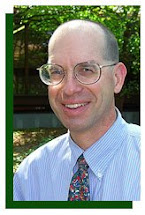1. Thirty years of human dimensions work. I was interviewed by Cindi Jacobson about the Missouri Department of Conservation's approach to use human dimensions information in fish, forest, and wildlife management efforts. Ms Jacobson is an Alaska Department of Fish and Game employee who is conducting Ph.D. research through the Human Dimensions Research Unit at Cornell University. She was in Missouri interviewing individuals at the Department of Conservation. She is also interviewing individuals in Arkansas, Maine, and New Mexico. I provided comments to her about the Department's nearly 30 years of human dimensions research and public involvement efforts. The Department of Conservation employed its first full-time social researcher in 1978.
2. Public involvement is used to find solutions and provide guidance. I reviewed materials to help in a citizen forum next week to collect solutions about a forest management issue. The Department of Conservation frequently uses public meetings, forums, and focus groups to enable citizens to provide direction for conservation issues. Examples of comments from several public forums conducted by the Department are available online.
3. Using technology to increase efficiency and reduce process time and costs. I participated in a meeting with Department staff to improve our use of SharePoint, a software collaboration tool, to make a wide variety of information easier to find, access, and use, including human dimensions and policy information.
4. Managing electronic files and information. I was interviewed by an outside consultant for a statewide effort to examine the needs of Missouri government agencies for managing and retrieving electronic files and documents. Managing the increasing number of electronic files is an important issue. From my perspective, improving the ability to find and access human dimensions reports, files, and data is very important both for my work and to increase the use of human dimensions information by Department staff, other agencies, and Missourians. Improving access to human dimensions information will make it easier for that information to be used to guide and provide accountability for conservation decisions.
5. Staying in touch with conservation opinions, satisfaction, and participation. I edited questions for a statewide survey about conservation opinions, participation, and satisfaction. This particular survey of Missourians was first conducted by the Department of Conservation in 1994 and has been repeated at regular intervals. It is an important effort to understand how Missourians feel about conservation issues.
Human dimensions information improves accountability. One of the nine goal categories of the Missouri Department of Conservation's strategic plan, The Next Generation of Conservation, is "Accounting for Department Operations." The goal statement is: "The Conservation Department will operate effectively with accountability for public funds and respect for Missouri citizens." Human dimensions information helps me and other Department staff make informed decisions. Although information can certainly increase our understanding of the complexity of issues and increase our awareness of the far-reaching consequences of decisions, sometimes information can make decisions more difficult or uncertain rather than easier. Even if a decision is difficult or the outcome uncertain, however, using information almost always makes a decision more accountable.
The desired results of the goal Accounting for Department Operations include:
Missouri citizens providing frequent input into Conservation Department decisions and programs.
Conservation efforts led by a highly trained, diverse, technologically skilled and professional staff.
Fair and ethical business methods that enable Missourians to see how public funds are spent on conservation priorities.
I think that all five of the examples I thought about from the past week help achieve these desired results.
The entire document of The Next Generation of Conservation is available online. Individual sections are also on the Department of Conservation's Web pages. A special issue of the Missouri Conservationist magazine, in September 2006, included information and other articles related to The Next Generation of Conservation.
The most recent annual reports from the Department of Conservation are also available online and a two-page summary of the 2006 annual report is in the January issue of the Missouri Conservationist magazine.

No comments:
Post a Comment